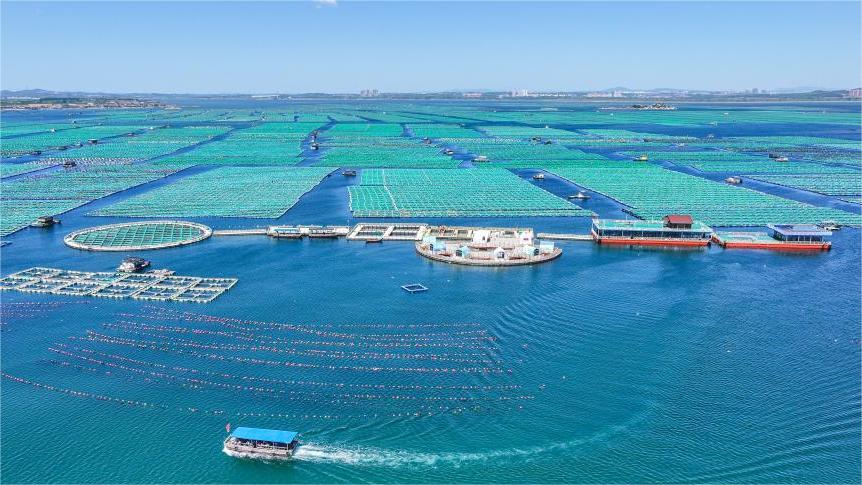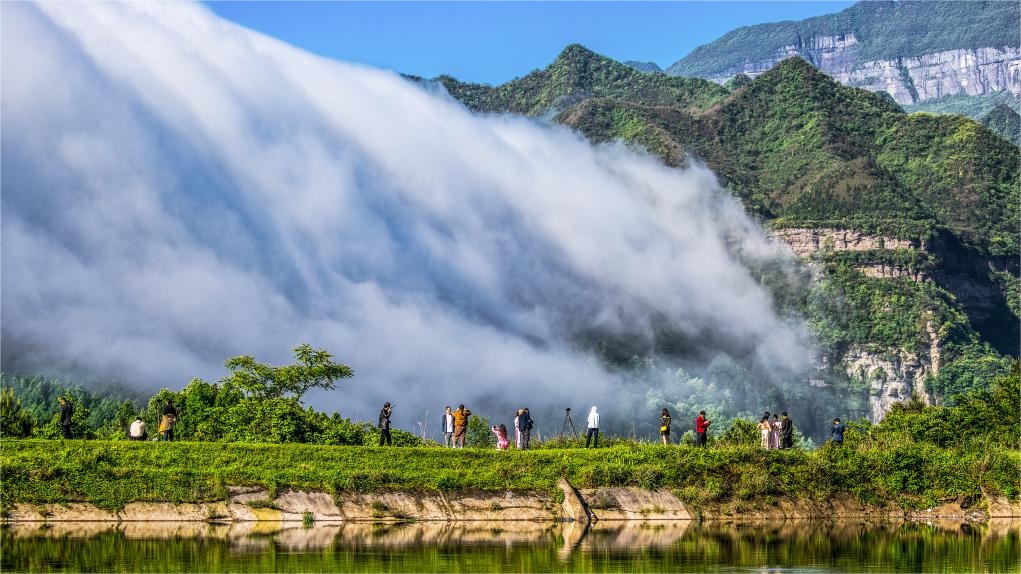'Flower appreciation economy' booms in China
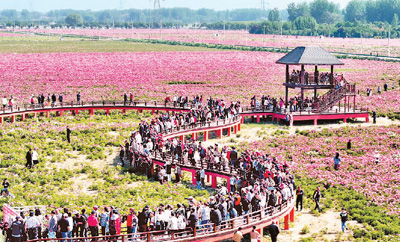
Tourists enjoy Chinese herbaceous peony blossoms in Jiangli village, Shibali township, Bozhou city, east China's Anhui Province, on May 1. (Photo/Xinhua)
Flower appreciation has become a new driving force for economic development in China. Various regions across the country are seizing the opportunity to develop the "flower appreciation economy," and have injected new vitality into the consumer market.
The 2024 Harbin Lilac Festival kicked off before the May Day holiday in Harbin, capital of northeast China's Heilongjiang Province. The lilac is Harbin’s city flower, and lilac flower viewing tours have become a highlight of the tourism market in the city.
During the five-day holiday period from May 1 to May 5, Harbin received nearly 6.24 million tourist visits, which was up 35 percent year on year.
Harbin has built several lilac-themed parks, and planted a large number of lilac trees in mini parks and streets in recent years. The city has rolled out tourism routes revolving around the lilac, which have captivated flocks of visitors.
Harbin is just one of the Chinese cities that have experienced a thriving flower appreciation economy. Various regions have developed a flower appreciation economy by integrating tourism projects, including unique folk activities and cultural performances and exhibitions with flower appreciation activities.
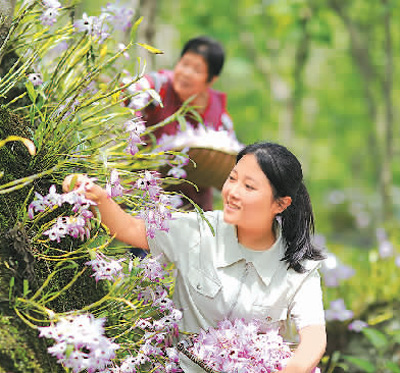
Villagers pick flowers of Dendrobium nobile Lindl in Honghua village, Wanglong township, Chishui city, southwest China's Guizhou Province, on May 5. (Photo/Wang Changyu)
The Huabohui Scenic Spot, which is home to over 1,000 mu (66.67 hectares) of flowers, in Wuhan city, central China's Hubei Province offers an immersive and mesmerizing night tour for tourists. They can watch over 100 performances and immerse themselves in a dreamy, fantastical night tour experience that integrates natural scenery, artistic performances, and technologies, like naked-eye 3D and holographic projections. Scenes like the bubble show, light and shadow show, and live-action dramas are hugely popular among visitors.
The booming flower appreciation economy has also driven the development of rural tourism. Many places have seized this opportunity to transform traditional agriculture into eco-tourism and leisure agriculture and form a comprehensive eco-tourism industry chain that has combined leisure travel and sightseeing, contributing to driving comprehensive rural revitalization.
Promoting the integration of the flower appreciation economy with distinctive rural industries can help increase farmers' incomes.
Han Minchun, a professor at the School of Economics of Huazhong University of Science and Technology, believes that combining flower appreciation, agriculture, culture and tourism in rural areas can effectively drive the rapid growth of services consumption like catering, accommodations, tourism, and transportation.
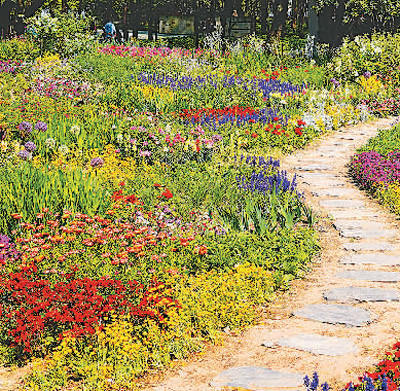
Photo taken on May 7 shows blooming flowers at Haidian Park in Beijing. (Photo/Song Jiaru)
Tulips and Chinese herbaceous peonies have brought prosperity to Wujiang village in Hangping township, Jinhua city, east China's Zhejiang Province.
Villager Xue Yong took the lead in developing the flower industry in the village. Five years ago, he obtained over 1,000 mu of land through the transfer of land-use rights from villagers to grow flowers.
Wujiang village is home to over 100 mu of tulips and nearly 1,000 mu of Chinese herbaceous peonies, which have turned the once lesser-known small village into a popular tourist destination. The village's peak daily tourist visits have exceeded 5,000, and its flower-themed tourism has generated a collective income of over 500,000 yuan ($69,229) a year for the village.
Xue also sells fresh flowers through livestreams on short video platforms, and daily sales reach 30,000 to 50,000 flowers.
"Now, flower cultivation in our village has provided job opportunities for over 60 villagers. Their salary, as well as income from land transfer, has led to an increment in monthly income of more than 4,500 yuan," Xue said.
To break through seasonal limitations on the flower appreciation economy, some places have provided tourists with richer experiences.
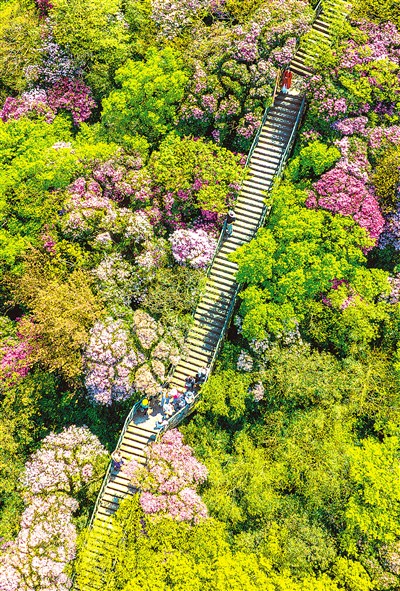
Tourists enjoy blooming azalea flowers at the Jinfo Mountain scenic area in Nanchuan district, southwest China's Chongqing Municipality, on May 5, 2024. (Photo/Hu Bo)
The Qianduo scenic spot in Xinghua city, east China’s Jiangsu Province is known for its boundless expanse of rapeseed flowers scattered on duotian, a type of field landscape formed by raising mud into small stacks in waters. The city has held 16 sessions of the Qianduo rapeseed tourism festival.
In recent years, the scenic spot has created more landscapes, enabling tourists to appreciate rapeseed flowers in spring, lotus flowers in summer, chrysanthemum flowers in autumn, and reed catkins in winter.
Since 2015, Yuyuantan Park in Beijing, known for its cherry blossoms, has developed cultural and creative products themed on cherry blossoms, which are popular among tourists.
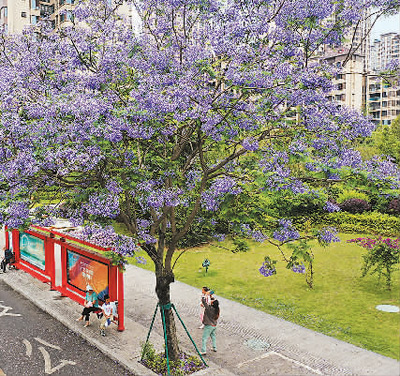
Photo taken on May 12, 2024 shows a jacaranda tree in full bloom in Dongpo district, Meishan city, southwest China's Sichuan Province. (Photo/Yao Yongliang)
Leveraging the flourishing flower appreciation economy, some places have vigorously developed the flower industry by building an industrial chain covering breeding, cultivation, and processing.
To better develop the flower appreciation economy, regions should actively promote the in-depth integrated development of flower tours with industries like agriculture, manufacturing, technology, commerce, and transportation, Han said.
Photos
Related Stories
- Fresh cut flower industry spurs consumption upgrading in China
- Endangered China rose species spotted in SW China
- Trending in China | Spring flower fields forever
- Feast your eyes on tulips in north China
- In pics: Magnificent view of blooming azalea flowers in E China's Jiangxi
- Azalea flowers attract tourists in SW China's Guizhou
Copyright © 2024 People's Daily Online. All Rights Reserved.






